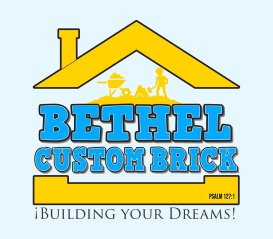Masonry chimneys are designed to be sturdy and long-lasting, but they are not impervious to water damage. Exposure to rain, snow, and freeze-thaw cycles can cause significant deterioration, leading to costly repairs if not addressed. Preventing water damage is essential for maintaining the structural integrity and functionality of your chimney. Here’s how you can protect your masonry chimney from water damage and ensure it remains in excellent condition for years to come.
1. Install a Chimney Cap
A chimney cap is one of the simplest and most effective ways to prevent water from entering your chimney.
What It Does:
A properly fitted cap covers the top of the chimney, preventing rain, snow, and debris from entering the flue.
Additional Benefits:
Chimney caps also keep animals and debris out, ensuring proper airflow and reducing blockages.
Maintenance:
Check your chimney cap regularly for damage or rust and replace it as needed to maintain its protective function.
2. Seal the Chimney Crown
The chimney crown, located at the very top of the chimney, is a critical barrier against water infiltration.
Common Issues:
Cracks in the chimney crown allow water to seep into the masonry below, leading to spalling bricks and mortar erosion.
Solution:
Apply a waterproof sealant to the crown or repair cracks promptly to prevent water penetration.
Replacement:
If the crown is extensively damaged, replacing it with a durable concrete or metal crown can provide long-term protection.
3. Waterproof the Chimney
Applying a high-quality waterproofing treatment to your chimney’s exterior is a proactive way to protect against moisture damage.
How It Works:
Waterproofing products are designed to repel water while allowing the masonry to breathe, preventing trapped moisture from causing internal damage.
Application:
Waterproofing should be done every 5–7 years for maximum effectiveness. Avoid using generic sealants, as they can trap moisture and exacerbate damage.
Professional Help:
Hiring a professional ensures even application and long-lasting results.
4. Maintain the Mortar Joints
Mortar joints are particularly vulnerable to water infiltration. Over time, they can crack, crumble, or erode, creating pathways for water to enter.
Signs of Damage:
Look for gaps, cracks, or loose mortar in the joints between bricks.
Repointing:
Damaged mortar can be replaced through a process called repointing, which involves removing the old mortar and replacing it with fresh, weather-resistant material.
Prevention:
Regular inspections can catch mortar issues early, reducing the risk of extensive water damage.
5. Repair or Replace Damaged Flashing
Flashing is the metal barrier that seals the gap between the chimney and the roof. If it becomes loose, corroded, or damaged, water can seep into the structure.
Inspection:
Regularly check your flashing for signs of wear or rust.
Repair:
Damaged flashing can often be resealed or patched.
Replacement:
In cases of severe damage, replacing the flashing ensures a watertight seal.
6. Address Efflorescence and Stains
Efflorescence is the white, powdery residue that appears on brick surfaces when water dissolves salts within the masonry. While it’s not inherently harmful, it’s a sign of water infiltration.
Cleaning:
Remove efflorescence using a stiff brush and water. Avoid harsh chemicals that can damage the masonry.
Underlying Issue:
Efflorescence often indicates a moisture problem that needs to be addressed through waterproofing or sealing.
7. Ensure Proper Drainage Around the Chimney
Water pooling around the base of your chimney can erode the foundation and lead to structural instability.
Grading:
Ensure the ground slopes away from your home to direct water away from the foundation.
Gutters and Downspouts:
Keep gutters and downspouts clear and functioning to prevent water from splashing onto the chimney.
8. Clean and Inspect Regularly
Routine cleaning and inspections are crucial for identifying and addressing potential water damage early.
Annual Inspections:
Have your chimney inspected annually by a professional to identify cracks, leaks, or other vulnerabilities.
Seasonal Maintenance:
Clean your chimney before and after the winter season to remove debris and check for weather-related damage.
Why Preventing Water Damage is Crucial
Routine cleaning and inspections are crucial for identifying and addressing potential water damage early.
Annual Inspections:
Have your chimney inspected annually by a professional to identify cracks, leaks, or other vulnerabilities.
Seasonal Maintenance:
Clean your chimney before and after the winter season to remove debris and check for weather-related damage.
Why Preventing Water Damage is Crucial
Water is one of the most damaging elements for masonry chimneys. Left unchecked, water infiltration can lead to spalling bricks, cracked mortar, mold growth, and even structural collapse. Preventing water damage not only extends the life of your chimney but also saves you money on repairs and ensures the safety of your home.
Bethel Custom Brick – Expert Masonry Chimney Services in the Detroit Metro Area
At Bethel Custom Brick, we specialize in protecting and restoring masonry chimneys from water damage. Serving the Detroit Metro area, our team provides professional chimney inspections, waterproofing, mortar repair, and crown replacement to keep your chimney in top condition. Contact us today to schedule an appointment and safeguard your chimney against the elements.


